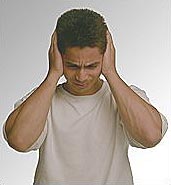Active Noise Reduction
Many people use headphones but most have never heard of active noise reduction (ANR) headphones. It isn't a recent invention, by any means. The theory behind active noise reduction was actually introduced back in 1934 when a German physicist called Paul Leug patented the idea! However, it wasn't till the late 80s when the first commercial active noise reduction headset was introduced. So, what does this active noise reduction technology really do?

To make this short and simple, ANR reduces the amount of background noise that gets to the wearer of the headset. It does this by detecting the unwanted noise and creating inverse (opposite) sound waves to cancel out the noise. So, you shouldn't hear any background noise at all!
Even if you use headphones a lot, you may not be aware of how just much background noise that's being transmitted to your ear. Often, what you are listening to is distorted or drowned out by ambient noise that gets through your headphones. Examples of such disruptive noise include air-conditioning or crying babies. So, if you want better audio clarity, you will have to increase the volume or move away from such noise sources.
Headphones using passive noise reduction methods like fully enclosing ear cups and sound absorbing materials help remove a lot of unwanted noise but they are often uncomfortable and heavy. In addition, they can't block out low frequency noise. You may think that a little noise won't hurt but noise causes fatigue and stress, especially over long periods of time.
That's why the first ANR headsets were designed for aviation use. Pilots and passengers have long endured loud engines with nothing more than passive headsets. Jet lag, caused by long flights, are often aggravated by the lack of proper noise protection.
But is active noise reduction only suitable for aviation use? Or is it only a matter of time before this technology becomes mainstream? To find out, I'll be examining as many ANR headsets I can get my hands on to find out just how well they work outside of an aircraft. Today, we will take a look at the first ANR headset to be tested at Adrian's Rojak Pot - the Bose QuietComfort Acoustic Noise Cancelling Headset!







 Add to Reddit
Add to Reddit
